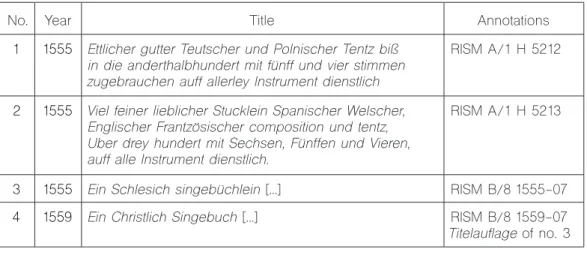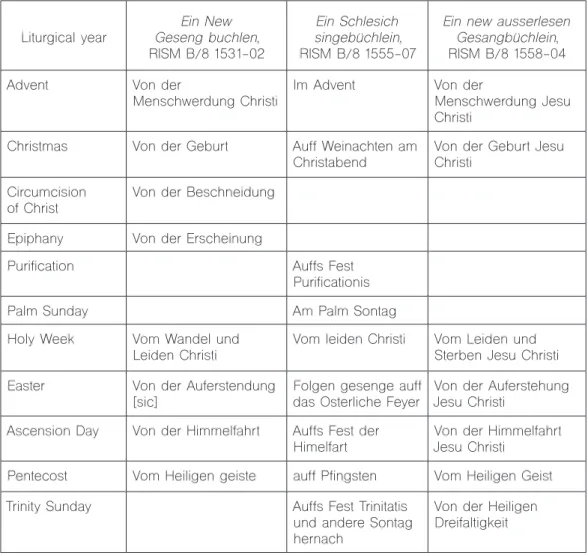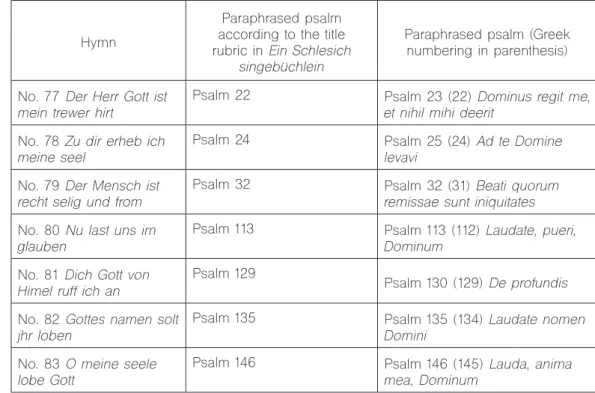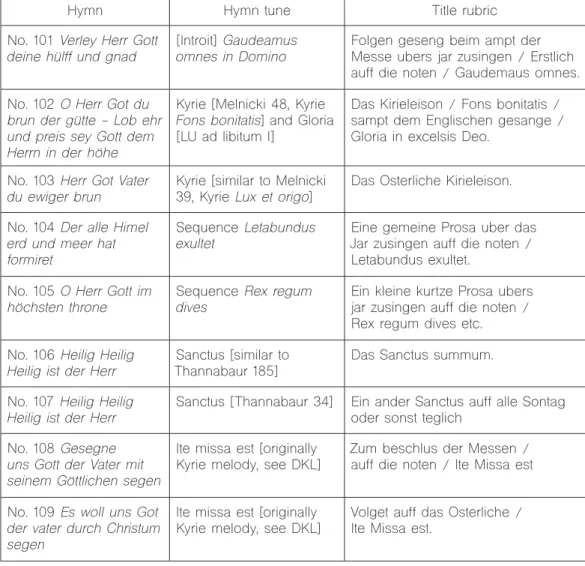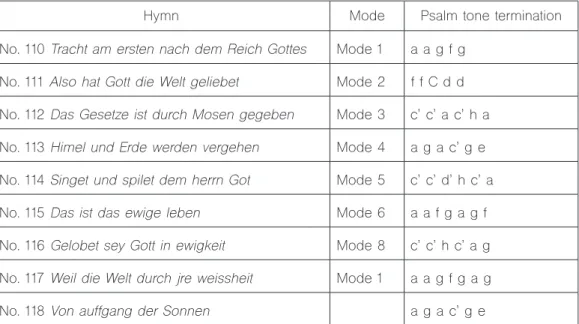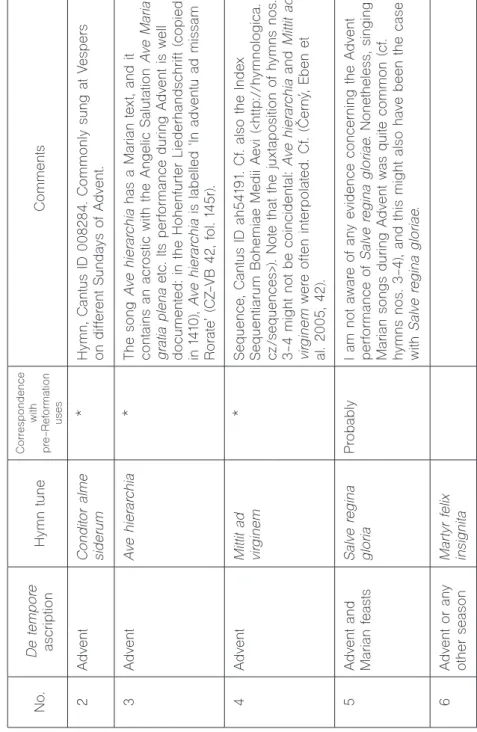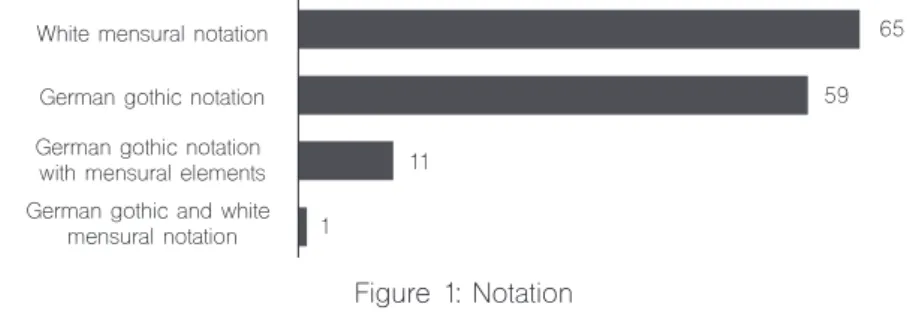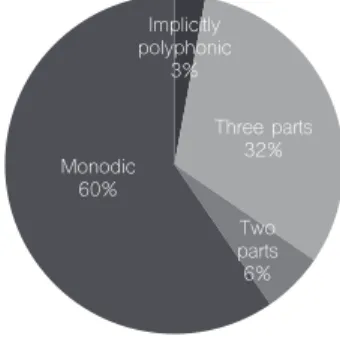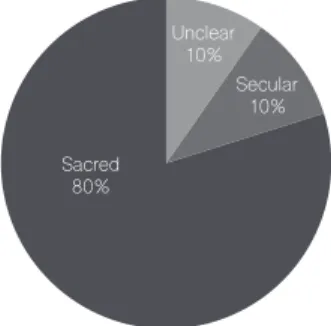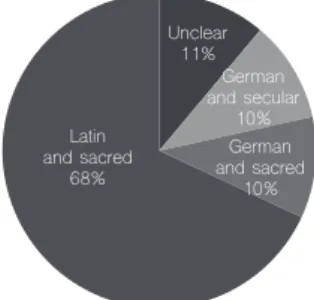of Valentin Triller
(Wrocław 1555)
in Early Modern Silesia
Instytut Sztuki Polskiej Akademii Nauk
wersja podstawowa
wersja piono licuje z lewą str
wersja piono wersja dwujęzyczna pionowa
napis w wersji angielskiej szary (60%)
Warszawa 2020
Antonio Chemotti
Warszawa 2020
Reviewers Tomasz Je
Christian Thomas Leitmeir Editing (pp. 1-186) Margaret Hiley Proofreading Bart omiej Gembicki
Layout of the scores and typesetting ukasz Szulim
Cover design
El bieta Wysocka-Zbiegie
Images on the cover and in Plates 1-2, 4-5 are from PL-Wu SDM 93 (Valentin Triller, Ein Christlich Singebuch, Wroc aw: Scharffenberg 1559).
Courtesy of University of Warsaw Library.
Images in Plate 3 are from CZ-HKm II A 7 and CZ-CHRm 12580. Courtesy of Muzeum východních ech (Hradec Králové) and Regionální muzeum (Chrudim).
The publication of this volume has received funding through the HERA project
‘Sound Memories: The Musical Past in Late-Medieval and Early-Modern Europe’.
This project has received funding from the European Union’s Horizon 2020 research and innovation programme under grant agreement no. 649307.
ISBN 978-83-66519-05-3
© Copyright 2020 by Instytut Sztuki Polskiej Akademii Nauk
© Copyright 2020 by Antonio Chemotti
Instytut Sztuki Polskiej Akademii Nauk ul. D uga 26/28
00-950 Warszawa
iswydawnictwo@ispan.pl
Printed in Poland
CONTENTS
Terminology viii
Texts and translations viii
Abbreviations ix
Primary sources and sigla xi
Musical examples xxi
Tables xxii Figures xxii Plates xxii Acknowledgements xxiii Introduction 1
Chapter 1: Printer and editor 9
1.1 Crispin Scharffenberg and music printing
in sixteenth-century Wroc aw 9
1.2 Valentin Triller 18
Chapter 2: The hymnbook through its paratexts 24
2.1 ‘A Silesian hymnbook’ 29
Silesian regionalism 31
2.2 Music and religious identity
in Valentin Triller’s dedication letter 34
Music as sacrifice of praise 34
A manifesto of faith 36
Duke Georg II of Brieg and the hymnbook 42
Valentin Triller’s reputation 47
2.3 ‘Set to many old familiar melodies’: musical past 49
2.4 Paratexts, content, and intended readership 60
Chapter 3: Content arrangement and liturgical assignments 64
3.1 The ordering of the hymns 64
Nos. 2-56: hymns de tempore 66 Nos. 57-66: hymns on the Christian Church
and sanctorale 70 Nos. 67-76: hymns for the whole year 71
Nos. 77-83: metrical psalms 71
Nos. 86-100: hymns for times of distress
and for thanksgiving 73
Nos. 101-109: hymns for mass 75
Nos. 110-124: hymns for the liturgy of the hours 77 Nos. 125-128: hymns for burial and marriage 79 Nos. 129-145: hymns on secular hymn tunes 80 3.2 Hymns, hymn tunes, and performance contexts 84 Pre- and post-Reformation performance traditions 96
Chapter 4: Repertory 99
4.1 Notation and number of parts 99
4.2 The hymn tunes from their editor’s perspective 102
Title rubrics and antiquity 109
4.3 The hymn tunes from a philological perspective 110 Ein Schlesich singebüchlein and earlier hymnbooks 110 The circulation of the polyphonic hymn tunes 113 Unica 116
Sacred models 121
Veni sancte spiritus - Da gaudiorum 127 Martir felix insignita 135
Regional repertories? 141
Secular models 143
Triller’s contrafacta and printed Lieder:
Ein Maidlein (Magd, die) sagt mir freundlich zu 146
Conclusions 154
Chapter 5: Reception 156 5.1 Silesian reception of Triller’s hymnbook 156 5.2 Triller’s hymns beyond the hymnbook 170
Conclusions: Musical pasts 179
Appendix A: Title pages, dedication letter,
and preface of Valentin Triller’s hymnbook 187
Appendix A/1: The 1555 title page 187
Appendix A/2: The 1559 title page 187
Appendix A/3: The dedication letter
to Duke Georg II of Brieg 188
Appendix A/4: The preface to the Christian reader 190 Appendix A/5: The paratexts in English translation 192 Appendix B: Catalogue of the hymns
in Valentin Triller’s hymnbook 195
Appendix C: Concordances
of Valentin Triller’s polyphonic hymns 232 Index of text incipits quoted
in Appendix B and Appendix C 260
Appendix D/1: Veni sancte spiritus
- Da gaudiorum in Utraquist sources 268 Appendix D/2: Martir Christi insignitus/insignita
in Utraquist sources 271
Appendix D/3: Efficax pax fax 273
Bibliography 275
TERMINOLOGY
Hymn and hymn tune: I use the collective term ‘hymn’ to refer to the text and music of the vernacular religious settings discussed in this book. Since these are mostly contrafacta, I use the term ‘hymn tune’ to refer to their music models, irrespective of their genre and text. For instance, Michael Weisse’s Als der gütiger Gott vollenden wollt sein Wort is based on the sequence Mittit ad virginem. I refer to the first as ‘hymn’
and to the second as its ‘hymn tune’. For the sake of clarity, I use the term ‘office hymn’
for hymns in the strict sense (Latin chants), without implying they were exclusively sung during the liturgy of the hour.
Geographical names: because of the history of the territories discussed in this book, many places have multiple names reflecting the different languages of the inhabitants, and these names can be perceived as ideologically connoted. I decided to deal with this complex situation in pragmatic terms, and when possible I use modern names that have currency in English (for instance, ’Wroc aw’ not ‘Breslau’). For other centres, noble titles, duchies etc. I use normalised German names that mirror those appearing in the sources I address (for instance, ’Brieg’ not ‘Brzeg’, ‘Liegnitz’ not ‘Legnica’ etc.). When misunderstandings could arise, I indicate also modern (mostly Polish) counterparts.
TEXTS AND TRANSLATIONS
Texts quoted from primary sources are transcribed as they appear in the sources, reproducing also the original punctuation. Abbreviations are spelled out without any special notation. In German texts, vowels with the diacritic sign ‘e’ have been transcribed with an Umlaut (ä, ö, ü). The letter ‘w’ is retained throughout, while the letter ‘v’ has been transcribed as ‘v’ or ‘u’ following the conventions of modern German.
Grantley McDonald translated title pages, dedication letter, and preface of Valentin
Triller’s hymnbook. All other translations are mine, if not stated otherwise. In the
translations, text incipits of musical items or generic labels have been normalised to
facilitate retrieval.
ABBREVIATIONS
Positions in the score are indicated by the voice and the bar, followed after a comma by the number of the note (counting from the beginning of the bar, including rests and syncopated values across bars). For instance, ‘bassus bar 17,1’ indicates the first note/
rest in bar 17 of the bassus.
Pitches follow the Helmholtz pitch notation. In the critical apparatus of Appendix D, they are given in parenthesis. For instance, ‘bassus bars 59–60 (A)’ indicates that the note in bars 59–60 of the bassus is A.
Clefs are indicated with the pitch in a capital letter followed by a number indicating its staff position. For instance, C1 indicates a c’ clef placed on the first line of the staff.
Rests are given in square brackets. For instance, ‘T bar 6,1 [Sb]’ indicates that the tenor in bar 6,1 has a semibreve rest.
AH Analecta hymnica B bassus
Br breve
Böker-Heil Norbert Böker-Heil, Harald Heckmann, Ilse Kindermann, Das Tenorlied.
Mehrstimmige Lieder in deutschen Quellen 1450–1580 (Kassel: Bären- reiter 1979–1986)
Cantus ID Identification number from Cantus Index. Catalogue of Chant Texts and Melodies, <http://cantusindex.org>
CAO Corpus antiphonalium officii Ct contratenor
D discantus
DKL Das deutsche Kirchenlied. Kritische Gesamtausgabe der Melodien (Kas- sel: Bärenreiter 1975–2010)
fol./fols. folio(s) L longa LU Liber usualis M minim
Melnicki Margaretha Landwehr-Melnicki, Das einstimmige Kyrie des lateinischen Mittelalters (Regensburg: Gustav Bosse Verlag 1955)
r recto
RISM Répertoire international des sources musicales, <http://www.rism.info>
Sb semibreve
Sehling Emil Sehling, Die evangelischen Kirchenordnungen des XVI. Jahrhun- derts (Leipzig: Reisland 1902–1913)
sig. cong. signum congruentiae T tenor
Thannabaur Peter Josef Thannabaur, Das einstimmige Sanctus der römischen Messe in der handschriftlichen Überlieferung des 11. bis 16. Jahrhunderts (Mün- chen: Ricke 1962)
v verso
VD16 Verzeichnis der im deutschen Sprachbereich erschienenen Drucke des 16. Jahrhunderts, <gateway-bayern.de/index_vd16.html>
VD17 Verzeichnis der im deutschen Sprachraum erschienenen Drucke des 17.
Jahrhunderts, <http://www.vd17.de>
vdm Catalogue of early German printed music, <www.vdm16.sbg.ac.at>
VL Die Deutsche Literatur des Mittelalters. Verfasserlexicon (Berlin: de Gruyter) W Philipp Wackernagel, Das deutsche Kirchenlied: von der ältesten Zeit bis
zu Anfang des 17. Jahrhunderts (Leipzig: Teubner 1864–1877)
WA D. Martin Luthers Werke. Kritische Gesamtausgabe (Weimar: Böhlau 1883- 1929)
WB Philipp Wackernagel, Bibliographie zur Geschichte des deutschen Kir- chenliedes im XVI. Jahrhundert (Frankfurt am Main: Heyder and Zimmer 1855)
Zahn Johannes Zahn, Die Melodien der deutschen evangelischen Kirchenlie-
der (Gütersloh: Bertelsmann 1889–1893)
PRIMARY SOURCES AND SIGLA PRINTS
Antwort auff Schwenckfelts suchung (Worms: Paul and Philipp Köpfel 1557), VD16 A 2999
Aus sonderer künstlicher Art (Augsburg: Erhard Öglin 1512), vdm 11
Breitkopf Gregor, De stricta divi Hieronymi vita carmen Sapphicum (Leipzig: Jakob Thanner 1504)
Catholisch Cantual (Mainz: Balthasar Lipp 1605), RISM B/8 1605-08, VD17 547 Catholische Kirchengesänge und geistlich Lieder (Neisse: Johann Schubart 1625), RISM
B/8 1625-13
Catholische Teutsche und Lateinische Gesang (Tegernsee: [no printer] 1574), VD16 W 794 Christliche Geseng Lateinisch und Deudsch, zum Begrebnis (Wittenberg: Joseph Klug 1542), RISM B/8 1542-15, vdm 1211
Corner David Gregor, Geistliche Nachtigal, der Catholischen Teütschen (Vienna: Gre- gor Gelbhaar 1649), RISM B/8 1649-02
Corvinus Laurentius, Cursus sancti Bonaventurae de passione domini (Wroc aw: Adam Dyon 1522), vdm 136
Corvinus Laurentius, Dialogus de Mentis saluberrima persuasione (Leipzig: Valentin Schumann 1516), vdm 134
Curaeus Joachim, Gentis Silesiae Annales (Wittenberg: Johann Krafft and Samuel Selfisch 1571), VD16 C 6391
Das Newer und gemehret Gesangbüchlein (Strasbourg: Thiebold Berger 1566), RISM B/8 1566-11
Davids Schleuder und aller frommer Kriegesleut Psalterlein (Wroc aw: Crispin Scharffen- berg 1566), VD16 ZV 15040
Die Psalmen Davids (Cologne: Gerwin Calenius, Johann Quentels Erben 1582), RISM B/8 1582-09, VD16 U 44
Diruta Girolamo, Il Transilvano (Venice: Girolamo Vincenti 1593), RISM A/1 D 3134
Ein Gesangbuch der Brüder inn Behemen und Merherrn (Wroc aw: Crispin Scharffen-
berg 1564), RISM B/8 1564-03
Ein Gesangbuch der Brüder inn Behemen und Merherrn (Wroc aw: Crispin Scharffenberg 1568), RISM B/8 1568-03
Ein hübsch Christlich gesang buchlen (Ulm: Jakob Gruner 1541), RISM B/8 1541-03, vdm 1244
Ein new ausserlesen Gesangbüchlein (Frankfurt an der Oder: Johann Eichorn 1558), RISM B/8 1558-04
Ein new außerlesen Gesangbüchlin für die Kirchen (Strasbourg: Carolus Acker 1568), RISM B/8 1568-09
Enchiridion geystlicher Gesenge (Erfurt: [Matthes Maler] 1525), RISM B/8 1525-07, vdm 191
Etlich cristlich Lider, Lobgesang und Psalm ([Nuremberg]: [Jobst Gutknecht] 1524), RISM B/8 1524/12-14, vdm 179-181
Eyn Gesang Buchlien geystlicher Gesenge (Wroc aw: Adam Dyon 1525), RISM B/8 1525-04, vdm 188
Eyn gesang Büchlein geystlicher Gesenge (Wroc aw: Adam Dyon [no date]), RISM B/8 1526-01, vdm 266
Faber Franz (Köckritz), Sabothus sive Silesia, in Itinerarium totius orbis (Basel: Conrad Waldkirch 1592)
Faber Heinrich, Compendiolum Musicae (Wroc aw: Crispin Scharffenberg 1562) Faber Heinrich, Compendiolum Musicae (Wroc aw: Crispin Scharffenberg 1568) Figulus Wolfgang, Vetera nova carmina (Frankfurt an der Oder: Johann Eichorn 1575), RISM A/1 F 722
Florus Nicolaus, Das uralte und Christliche Lobgesang, Ein Kindelein so Löbelich, etc.
(Strasbourg: Nikolaus Wiriot 1581), VD16 F 1732
Forster Georg, Ein Außzug guter alter und newer teutscher Liedlin (Nuremberg: Johann Petreius 1539), vdm 48
Forster Georg, Ein Ausszug guter alter und newer teutscher Liedlein (Nuremberg:
Johann Petreius 1543), vdm 1025
Forster Georg, Ein Außbund schöner teutscher Liedlein (Nuremberg: Johann vom Berg and Ulrich Neuber 1549), vdm 1130
Forster Georg, Ein Außbund schöner teutscher Liedlein (Nuremberg: Johann vom Berg
and Ulrich Neuber 1551), vdm 1516
Forster Georg, Ein Außbund schöner teutscher Liedlein (Nuremberg: Johann vom Berg and Ulrich Neuber 1552), RISM B/1 1552/27
Forster Georg, Ein Außbund schöner teutscher Liedlein (Nuremberg: Johann vom Berg and Ulrich Neuber 1560), RISM B/1 1560-25
Fünfundsiebzig hübsche Lieder (Cologne: Arnt von Aich [c. 1514–1515]), vdm 17 Gantz newe geystliche teütsche Hymnus und gesang (Nuremberg: Jobst Gutnecht 1527), RISM B/8 1527-07, vdm 340
Gassenhawer und Reutterliedlin ([Frankfurt am Main]: [Christian Egenolff] [1552]), vdm 24 Gassenhawerlin (Frankfurt am Main: Christian Egenolff 1535), vdm 21
Geistliche lieder auffs new gebessert (Erfurt: Andreas Rauscher 1531), RISM B/8 1531- 03, vdm 379
Geistliche Lieder auffs new gebessert (Wittenberg: Josef Klug 1533), RISM B/8 1533- 02, vdm 384
Geistliche Lieder auffs new gebessert zu Wittemberg D. Mar. Luther (Wittenberg:
Joseph Klug 1529), RISM B/8 1529-03, vdm 357
Geistliche lieder D. Martin. Luth. (Wroc aw: Crispin Scharffenberg 1572), RISM B/8 1572-01
Geistliche lieder D. Martin. Luth. (Wroc aw: Crispin Scharffenberg 1577), RISM B/8 1577-02
Geistliche lieder D. Martin. Luth. (Wroc aw: Georg Baumann 1597), RISM B/8 1597-03 Geystliche gesangk Buchleyn (Wittenberg: [Josef Klug] 1524), RISM B/8 1524-18, vdm 110
Gesangbuch (Strasbourg: Georg Messerschmidt 1541), RISM B/8 1541-06
Gigas Johannes, Des alten Christlichen Lieds, Ein Kindelein so löbelich, etc. kurtze erklerung (Frankfurt an der Oder: Johann Eichorn 1564), VD16 H 3208
Gigas Johannes, Ein schön new tröstlich lied in sterbens leufften (Wroc aw: Crispin Scharffenberg [no date])
Groß Catholisch Gesangbuch (Fürth: Georg Endter 1625), RISM B/8 1625-04
Haug Virgil, Erotemata musicae practicae (Wroc aw: Andreas Winkler 1541), vdm 1318
Haug Virgil, Erotemata musicae practicae (Wroc aw: [Andreas Winkler] 1545), vdm 1315
Hecyrus Christoph (Schweher), Veteres ac piae cantiones praecipuorum anni festorum
(Nuremberg: Johann Berg and Ulrich Neuber 1561), RISM A/1 S 2474
Herman Nicolaus, Die Historien von der Sindfludt (Wittenberg: Georg Rhaus Erben 1562), RISM B/8 1562-03, VD16 H 2380
Hessen Paul, Hessen Bartholomaeus, Ettlicher gutter Teutscher und Polnischer Tentz (Wroc aw: Crispin Scharffenberg 1555), RISM A/1 H 5212
Hessen Paul, Hessen Bartholomaeus, Viel feiner lieblicher Stucklein (Wroc aw: Crispin Scharffenberg 1555), RISM A/1 H 5213
Hofmann Martin, Biblia Puerorum Scholae Latinae Christianae (Wroc aw: Crispin Scharffen- berg 1571), VD16 H 4299
Horn Johann, Ein Gesangbuch der Brüder inn Behemen und Merherrn (Nuremberg:
Johann Günther 1544), RISM B/8 1544-01
Hundert Christenliche Haußgesang (Nuremberg: Hans Koler 1569), VD16 H 5899 Hundert und fünfftzehen guter newer Liedlein (Nuremberg: [Hans Ott] 1544), vdm 1027 Hyalinus Johannes, Von den Versuchungen des Herrn Christi (Wittenberg: Georg Rhau Erben 1551), VD16 G 2178
Hymnarius durch das ganntz Jar verteutscht ([Schwaz am Inn]: Joseph Piernsieder 1524), RISM B/8 1524-06, vdm 177
Kirchengeseng (Ivan ice: [no printer] 1566), RISM B/8 1566-05
Knaust Heinrich, Gassenhawer, Reuter und Bergliedlin, Christlich, moraliter, unnd sittlich verendert (Frankfurt am Main: heirs of Christian Egenolff 1571), VD16 K 1407
Leisentrit Johannes, Geistliche Lieder und Psalmen (Bautzen: Hans Wolrab 1567), RISM B/8 1567-05
Leisentrit Johannes, Geistliche lieder und Psalmen (Bautzen: Michael Wolrab 1573), RISM B/8 1573-02
Leisentrit Johannes, Catholisch Gesangbuch (Bautzen: Michael Wolrab 1584), RISM B/8 1584-05
Leo Valentin, Ein Gebet wider den Türcken (Wroc aw: Crispin Scharffenberg 1566) Libellus elementarius (Prague: per Ioannem Gitzinum 1569)
Listenius Nikolaus, Musica (Wroc aw: Crispin Scharffenberg 1573)
Lossius Lucas, Psalmodia (Nuremberg: Gabriele Hayn 1553), RISM B/8 1553-10
Lossius Lucas, Psalmodia (Wittenberg: G. Rhaus Erben 1561), RISM B/8 1561-20
Lossius Lucas, Psalmodia (Wittenberg: Johann Schwertel 1569), RISM B/8 1569-24
Melanchthon Philipp, Grammatices Latinae elementa (Wroc aw: Crispin Scharffenberg 1558), VD16 ZV 25175
Musaeus Simon, Auslegung des ersten Psalms (Wroc aw: Crispin Scharffenberg 1556), VD16 M 5029
Nefe Matthäus, Arithmetica (Wroc aw: Crispin Scharffenberg 1565), VD16 N 445 Neu=Eingerichtetes Gesang=Buch (Germantown: Christoph Saur 1762)
Ordnunge so zu Breslaw inn den Pfarkirchen unter der Türckenglocken gehalten wird (Wroc aw: Crispin Scharffenberg 1566), VD16 S 3828-3829
Paminger Leonhard, Primus tomus ecclesiasticarum cantionum (Nuremberg: Theodor Gerlach 1573), RISM A/1 P 828
Plautus Titus Maccius, M. Accii Plauti comedia castissima (Wroc aw: Crispin Scharffen- berg 1570), VD16 ZV 30126
Praetorius Michael, Musae Sioniae ... Achter Theil (Wolfenbüttel: Fürstliche Druckerei 1610), RISM A/1 P 5357
Praetorius Michael, Musae Sioniae ... Siebender Theil (Wolfenbüttel: Fürstliche Druckerei 1609), RISM B/1 1609-10
Razzi Serafino, Libro primo delle laudi spirituali da diversi eccell. e divoti autori, antichi e moderni composte (Venice: Francesco Rampazzetto ad instanzia degli heredi di Bernardo Giunti di Firenze 1563), RISM B/1 1563-06
Ries Adam, Rechnung auff den Linien und der Federn (Wroc aw: Crispin Scharffenberg 1563), VD16 R 2393
Schlesische Kirchengesangbuch (Wroc aw and Liegnitz: Michael Rohrlachs seel. Wittib und Erben 1704)
Schwenckfeld Kaspar, Vom under schayde des worts Gottes (Augsburg: Hans Gegler 1554), VD16 S 5029
[Sixty-eight songs] ([Augsburg]: [Öglin] [c. 1512–1513]), vdm 14 [Songs for 3–4 voices] (Mainz: Peter Schöffer 1513), vdm 13
Spangenberg Cyriacus, Christlichs Gesangbüchlein (Eisleben: Petri 1568), RISM B/8 1568-08
Spangenberg Johann, Alte und newe geistliche Lieder (Erfurt: Melchior Sachse the Elder 1544), RISM B/8 1544-03, vdm 1279
Spangenberg Johann, Kirchengesenge Deudsch (Magdeburg: Michael Lotter 1545),
RISM B/8 1545/14-16, vdm 1398
Summa nabo e stwa i powinowatstwa Chrze cia skiego (Wroc aw: Crispin Scharffen- berg 1573), RISM A/1 BB 3758 I,1
Terentius Afer Publius, P. Terentii comoediae sex (Wroc aw: Crispin Scharffenberg 1558), VD16 T 449
Terentius Afer Publius, P. Terentii comoediae sex (Wroc aw: Crispin Scharffenberg 1566), VD16 T 464
Terentius Afer Publius, P. Terentii comoediae sex (Wroc aw: Crispin Scharffenberg 1574), VD16 T 473
[Thirty-six songs] (Mainz: Peter Schöffer 1517), vdm 16
Triller Valentin, Ein Christlich Singebuch (Wroc aw: Crispin Scharffenberg 1559), RISM B/8 1559-07
Triller Valentin, Ein Schlesich singebüchlein (Wroc aw: Crispin Scharffenberg 1555), RISM B/8 1555-07
Volckmar Wilhelm, Harmonielehre (Leipzig: Breitkopf und Härtel 1860) Vulturinus Pancratius (Geier), Slesia, Bresla etc. (Wroc aw: [printer?] 1521)
Weisse Michael, Ein New Geseng buchlen (Jungbunzlau: [no printer] 1531), RISM B/8 1531-02
Wittenbergisch Gsangbiichli [sic] (Strasbourg: Peter Schöffer and Matthias Apiarius 1537), RISM B/8 1537-08, vdm 113
Wittenbergische Gsangbüchli (Strasbourg: Peter Schöffer and Matthias Apiarius 1534), RISM B/8 1534-07, vdm 112
Wittich Hieronymus, Kurtze vnnd gründtliche widderlegung (Magdeburg: Michael Lotter 1555) VD16 W 3789
Winnigstedt Johannes, Das alte gedicht welchs man nennet das Mülenlied (Magdeburg:
Michael Lotter 1552), VD16 W 3499
MANUSCRIPTS
A-Gu 756 (‘Seckauer Cantionarius’) Austria, Graz, Universitätsbibliothek, MS 756 B-Br IV.90 Belgium, Brussels, Bibliothèque royale de Belgique, MS IV.90
B-Tv 94 Belgium, Tournai, Bibliothèque de la Ville, MS 94
CH-Bu F IX 59-62 Switzerland, Basel, Öffentliche Bibliothek der Universität, MS F IX
59-62
CH-Bu F X 5-9 Switzerland, Basel, Öffentliche Bibliothek der Universität, MS F X 5-9 CH-Bu F X 10 Switzerland, Basel, Öffentliche Bibliothek der Universität, MS F X 10 CH-Bu F X 17-20 Switzerland, Basel, Öffentliche Bibliothek der Universität, MS F X 17-20
CH-Bu F X 21 Switzerland, Basel, Öffentliche Bibliothek der Universität, M F X 21 CH-Bu F X 25-26 Switzerland, Basel, Öffentliche Bibliothek der Universität, M F X 25-26 CH-SGs MS 463 (‘Tschudi’s Songbook’) Switzerland, Sankt Gallen, Stiftsbibliothek, MS 463
CZ-CHRm 12580 (‘Chrudim Graduale’) Czech Republic, Chrudim, Regionální muzeum, MS 12580
CZ-HKm II A 6 (‘Franus Codex’) Czech Republic, Hradec Králové, Muzeum východních ech, MS II A 6
CZ-HKm II A 7 (‘Speciálník Codex’) Czech Republic, Hradec Králové, Muzeum východních ech, MS II A 7
CZ-HKm II A 14 Czech Republic, Hradec Králové, Muzeum východních ech, MS II A 14 (Hr-15)
CZ-KLm 403 Czech Republic, Klatovy, Vlastiv dné muzeum Dr. Hostaše, MS 403 CZ-KUm 88/85 Czech Republic, Kutná Hora, eské muzeum st íbra, MS 88/85 CZ-OP RC 4 Czech Republic, Opava, Slezské zemské muzeum, MS RC 4
CZ-Pa Vyš 376 Czech Republic, Prague, Národní archiv, fond Vyšehradská kapitula, MS Vyš 376
CZ-Pam 7847 Czech Republic, Prague, Archiv hlavního m sta Prahy, MS 7847
CZ-Pnm I A 17 (‘Solnice Gradual’) Czech Republic, Prague, Národní muzeum, MS I A 17 CZ-Pnm II C 7 (‘Jistebnice Cantionale’) Czech Republic, Prague, Národní muzeum, MS II C 7
CZ-Pnm XII A 23 Czech Republic, Prague, Národní muzeum, MS XII A 23 CZ-Pnm XIII A 2 Czech Republic, Prague, Národní muzeum, MS XIII A 2
CZ-Ps DA III 17 Czech Republic, Prague, Památník národního písemnictví, Strahovská knihovna, MS DA III 17
CZ-Pu I G 39 Czech Republic, Prague, Národní knihovna R, MS I G 39
CZ-Pu XVII A 3 Czech Republic, Prague, Národní knihovna R, MS XVII A 3
CZ-Pu XVII A 41 Czech Republic, Prague, Národní knihovna R, MS XVII A 41 CZ-Pu XVII A 53a Czech Republic, Prague, Národní knihovna R, MS XVII A 53a CZ-Pu 59 R 5116 (‘Prague Speciálník’) Czech Republic, Prague, Národní knihovna R, MS 59 R 5116
CZ-TEm 2 Czech Republic, Teplice, Knihovna Regionálního muzea, MS 2 CZ-TRE A 4 Czech Republic, T ebo , Státní oblastní archiv, MS A 4 CZ-VB 28 Czech Republic, Vyšší Brod, Klášterní knihovna, MS 28
CZ-VB 42 (‘Hohenfurter Liederhandschrift’) Czech Republic, Vyšší Brod, Klášterní knihovna, MS 42
CZ-VO Czech Republic, Vod any, M stské muzeum a galerie, inv. 18551
D-B MS Mus. 40021 Germany, Berlin, Staatsbibliothek zu Berlin, MS Mus. 40021 D-B MS Mus. 40193 Germany, Berlin, Staatsbibliothek zu Berlin, MS Mus. 40193 D-B MS Mus. 40194 Germany, Berlin, Staatsbibliothek zu Berlin, MS Mus. 40194 D-B Slg Bohn Mus. MS 352 Germany, Berlin, Staatsbibliothek zu Berlin, Sammlung Bohn Mus. MS 352
D-Bsb Theol. Lat. Qu. 149 Germany, Berlin, Staatsbibliothek zu Berlin, Theol. Lat. Qu. 149 D-D MS Grimma 51 Germany, Dresden, Sächsische Landesbibliothek, MS Grimma 51 D-D MS Mus. 1/E/24 Germany, Dresden, Sächsische Landesbibliothek, MS Mus. 1/E/24 D-Heid Cod. Pal. germ. 734 Germany, Heidelberg, Universitätsbibliothek, Cod. Pal. germ.
734
D-HRD 9822 Germany, Arnsberg-Herdringen, Jagdschloss Herdringen, Bibliotheca Fürstenbergiana, MS 9822
D-ISL IV 36 F124 Germany, Iserlohn, Varnhagensche Bibliothek, fragments from incu- nabulum IV 36 F124
D-LEu 1305 Germany, Leipzig, Universitätsbibliothek, MS 1305
D-LEu 1494 (‘Apel Codex’) Germany, Leipzig, Universitätsbibliothek, MS 1494 D-Mbs Clm 5023 Germany, Munich, Bayerische Staatsbibliothek, Clm 5023 D-Mbs Clm 11943 Germany, Munich, Bayerische Staatsbibliothek, Clm 11943
D-Mbs Mus. MS 1501 Germany, Munich, Bayerische Staatsbibliothek, Mus. MS 1501
D-Mbs Mus. MS 3155 Germany, Munich, Bayerische Staatsbibliothek, Mus. MS 3155
D-Rp A. R. 855 Germany, Regensburg, Bischöfliche Zentralbibliothek, MS A. R. 855 D-Rp A. R. 940/941 Germany, Regensburg, Bischöfliche Zentralbibliothek, MS A. R.
940/941
D-Rtt Freie Künste Musik 76 Abth. II, Regensburg, Fürst Thurn und Taxis Hofbibliothek, Freie Künste Musik 76 Abth. II
D-TRs 322/1994 Germany, Trier, Stadtbibliothek, MS 322/1994
D-Usch MS 236 A-D Germany, Ulm, Schermar Bibliothek, MS 236 A-D
D-W A: 5.1 Mus. Germany, Wolfenbüttel, Herzog August Bibliothek, A: 5.1 Mus. (hand- written addition to Ein hübsch Christlich gesang buchlen, Ulm: Jakob Gruner 1541) D-W Cod. Guelf. 37.27 Aug. 2° Germany, Wolfenbüttel, Herzog August Bibliothek, Cod.
Guelf. 37.27 Aug. 2°
D-W Cod. Guelf. 292 Germany, Wolfenbüttel, Herzog August Bibliothek, Cod. Guelf.
292
D-Z 17.8.39 Germany, Zwickau, Ratsschulbibliothek, MS 17.8.39 D-Z 78,2 Germany, Zwickau, Ratsschulbibliothek, MS 78,2
GB-Lbl Add. MS 31922 (‘Henry VIII Manuscript’) United Kingdom, London, British Library, Add. MS 31922
H-Bn Ms. lat. 243 (‘Trnava Codex’) Hungary, Budapest, Országos Széchényi Könyvtár, Ms. lat. 243
H-Bu U.Fr.l.ch. 297 Hungary, Budapest, Egyetemi Könyvtár, fragment U.Fr.l.ch. 297 H-Bu U.Fr.l.ch. 299 Hungary, Budapest, Egyetemi Könyvtár, fragment U.Fr.l.ch. 299 I-Bc Q.15 Italy, Bologna, Museo Internazionale e Biblioteca della Musica di Bologna, Q.15 I-Bu MS 2216 Italy, Bologna, Biblioteca universitaria, MS 2216
I-PAVu MS Aldini 361 Italy, Pavia, Biblioteca universitaria, MS Aldini 361
I-TRbc 87 Italy, Trento, Museo Provinciale d’Arte, Castello del Buonconsiglio, MS 1374 (Tr 87)
PL-C DD I 28 Poland, Cieszyn, Oddzia Zabytkowy Biblioteki l skiej w Cieszynie, MS DD I 28
PL-Kj Mus. ms. 40098 (‘Glogauer Liederbuch’ or ‘ aga partbooks’) Poland, Kraków, Biblioteka Jagiello ska, Mus. ms. 40098
PL-Nm (lost) Nysa, Städtisches Museum
PL-P sem 35 Poland, P ock, Archiwum i Biblioteka Seminarium Duchownego w P ocku, MS 35
PL-SAk 40 Poland, Sandomierz, Biblioteka Kapitu y Katedralnej w Sandomierzu, MS 40 PL-Tm J. 4 ° 29-32 Poland, Toru , Wojewódzka Biblioteka Publiczna - Ksi nica Ko- pernika ska, MS J. 4 ° 29-32
PL-WRk 58 (‘Neumarkter Cantionale’) Poland, Wroc aw, Archiwum Archidiecezjalne, Biblioteka Kapitulna, MS 58
PL-WRu 51221 Poland, Wroc aw, Biblioteka Uniwersytecka, 51221 Muz.
PL-WRu XV Q 1066a Poland, Wroc aw, Biblioteka Uniwersytecka, XV Q 1066a
PL-Wu RM 5892 (‘Wroc aw Codex’) Poland, Warsaw, Biblioteka Uniwersytecka, RM 5892 (olim Mf 2016)
SK-Bu Inc. 318 (‘Košice Fragments’) Slovakia, Bratislava, Univerzitná kni nica, Inc. 318
MUSICAL EXAMPLES
Musical example 1: Triller’s no. 73 Ey Got Vatter aller Gnaden compared to Euge virgo castissima (Veteres ac piae cantiones, Nuremberg: Johann Berg and Ulrich Neuber 1561)
Musical example 2: Triller’s no. 3 Als wir warn beladen bars 1-17 compared to Ave jerarchia (D-Mbs Clm 11943)
Musical example 3: Triller’s no. 82 Gottes namen solt jhr loben bars 1-9 compared to Juste iudex Jesu Christe (CZ-Pnm XII A 23)
Musical example 4: Triller’s no. 48 Komb güttiger unnd tewrer Got - Ein reicher milter Geist bars 11-22 compared to Veni sancte spiritus - Da gaudiorum (CZ-HK II A 7)
Musical example 5: Triller’s no. 6 Wolauff last uns frölich singen bars 1-18 compared to Martir Christi insignitus/insignita (CZ-HK II A 7)
Musical example 6: Triller’s no. 8 O herr Gott vater wir singen dir, bars 24-27
Musical example 7: Triller’s no. 131 Ach mein Got sprich mir freuntlich zu bars 12-17 compared to Ein Maidlein (Magd, die) sagt mir freundlich zu ([Songs for 3–4 voices], Mainz: Schöffer 1513 and Ein Außzug guter alter und newer teutscher Liedlin, Nurem- berg: Johann Petreius 1539)
Musical example 8: Triller’s no. 131 Ach mein Got sprich mir freuntlich zu bars 21-27 Musical example 9: Ein Magd, die sagt mir freundlich zu bars 21-28 from [Songs for 3–4 voices], Mainz: Schöffer 1513
Musical example 10: Ein Maidlein sagt mir freundlich zu bars 21-30 from Ein Außzug guter alter und newer teutscher Liedlin, Nuremberg: Johann Petreius 1539
Musical example 11: The bassus of Triller’s no. 138 Nie noch nimmer hab ich erkandt compared to Nie noch nimmer so ruht mein G’müt from sixteenth-century printed sources
Musical example 12: Triller’s no. 137 O werder mundt durch den mir kundt bars 17-20 compared to O werter Mund, von dir ist wund (Fünfundsiebzig hübsche Lieder, Co- logne: Arnt von Aich [c. 1514-1515])
Musical example 13: Triller’s no. 131 Ach mein Got sprich mir freuntlich zu bars 12-17 compared to Michael Praetorius’ version in Musae Sioniae ... Siebender Theil (Wolfen- büttel: Fürstliche Druckerei 1609)
Musical example 14: Triller’s no. 140 So schon von art bars 21-24 and the handwritten
corrections in D-W H: Yv 1129.8° Helmst.
Musical example 15: So schon von art bars 16-18 from Michael Praetorius, Musae Sioniae ... Siebender Theil (Wolfenbüttel: Fürstliche Druckerei 1609)
TABLES
Table 1: Crispin Scharffenberg’s prints with musical notation Table 2: De tempore order in three sixteenth-century hymnbooks Table 3: Metrical psalms nos. 77-83
Table 4: Hymns for mass nos. 101-109 Table 5: Antiphons nos. 110-118
Table 6: Hymns de tempore nos. 2-56 and pre-Reformation performance customs Table 7: Triller’s polyphonic models in the Speciálník Codex
Table 8: Sources of Veni sancte spiritus - Da gaudiorum Table 9: Triller’s hymns in Michael Praetorius’ Musae Sioniae
FIGURES Figure 1: Notation
Figure 2: Number of parts
Figure 3: Language of the hymn tunes
Figure 4: Content of the hymn tunes (sacred versus secular) Figure 5: Language and content of the hymn tunes
Figure 6: Genre of the chant hymn tunes Figure 7: Latin sacred hymn tunes
Figure 8: Triller’s hymn tunes in previous hymnbooks Figure 9: Triller’s hymn tunes in previous hymnbooks
PLATES
Plate 1: The last folio of Valentin Triller’s hymnbook (PL-Wu SDM 93, fol. o4v) Plate 2: The coat of arms of Duke Georg II of Brieg (PL-Wu SDM 93, fol. A1v)
Plate 3: The opening melisma of Martir Christi insignitus/insignita in CZ-HKm II A 7 and CZ-CHRm 12580
Plate 4: PL-Wu SDM 93, fol. C2r (no. 6 Wolauff last uns frölich singen)
Plate 5: PL-Wu SDM 93, fol. T4r (no. 68 Rein und besser ist Gottes wort)
ACKNOWLEDGEMENTS
This book is the result of research undertaken as part of the HERA (Humanities in the European Research Area) funded project ‘Sound Memories: The Musical Past in Late- Medieval and Early-Modern Europe’. I would like to thank all of my colleagues in this project and its five research teams who generously contributed to my research through countless suggestions and inspiring comments over the several project meetings that took place across Europe between 2016-2019: Susan Rankin and Adam Mathias (University of Cambridge), Inga Mai Groote and Christine Roth (Heidelberg University / University of Zurich), Lenka Hlávková, David Eben, and Jan Ciglbauer (Charles University, Prague), Karl Kügle, Ulrike Hascher-Burger (†), and Manon Louviot (Utrecht University), and especially my dear colleagues at the Institute of Art at the Polish Academy of Sciences, Pawe Gancarczyk and Bart omiej Gembicki.
I would also like to thank Margaret Bent, Birgit Lodes, Klaus Pietschmann, Hartmut Schick, Katelijne Schiltz, and Christiane Wiesenfeldt for giving me the opportunity to present my work at their research seminars, which provided an invaluable forum to question and refine my understanding of the source discussed in this book.
I would also like to express my gratitude to the scholars from whose help I benefitted during the research: Charles E. Brewer, Scott Edwards, Ute Evers, Margot Fassler, Daniele V. Filippi, Tomasz Je , Gra yna Jurkowlaniec, Moritz Kelber, Paul Kolb, Franz Körndle, Henrike Lähnemann, Christian Leitmeir, Agnieszka Leszczy ska, David Merlin, Michael Meyer, Michael G. Müller, Francesco Pezzi, Barbara Przybyszewska-Jarmi ska, Daniele Sabaino, Bernhold Schmid, Michael Schonhardt, Nicole Schwindt, Rodobaldo Tibaldi, Daniel Tiemeyer, and Sonja Tröster. Special thanks go to Grantley McDonald for
providing English translations of the German texts edited in Appendix A.
I would also like to thank Piotr Maculewicz, head of the Music Department at the University of Warsaw Library, and Ewa Taranienko, head of the library at the Institute of Art at the Polish Academy of Sciences.
Last but by no means least, I would like to thank the Associate Partners of the Sound
Memories project, especially Anonymous III (Michael Bell, Gopal Kambo, and Stephen
Matthews), La Morra (Micha Gondko and Corina Marti), and Schola Gregoriana
Pragensis (David Eben). Through their passionate music making, these long silent
pieces have once more become sound memories.
Introduction
In 1555 Valentin Triller, the Lutheran pastor of a village in Lower Silesia, pub- lished a hymnbook entitled Ein Schlesich [sic] singebüchlein, ‘a Silesian hymnbook’.
This collection, intended for Lutheran communities, contains hymns with German texts, most of them with musical notation. It was printed at the workshop of Crispin Scharffenberg in Wroc aw and dedicated to Duke Georg II of Brieg (1523 – 1586), a rising authority among the Silesian estates.
Ein Schlesich singebüchlein is beyond doubt one of the most-studied musical sources from early modern Silesia. The hymnbook and its author were already known to eighteenth-century lexicographers,
1and especially in the nineteenth century hym- nologists dealt extensively with its content, which was regarded as a precious record of the German Volkslied.
2Philipp Wackernagel, the author of the weighty Das deutsche Kirchenlied von der ältesten Zeit bis zu Anfang des XVII. Jahrhunderts, described Valentin Triller’s hymnbook in his 1855 Bibliographie zur Geschichte des deutschen Kirchenliedes,
3and he edited most of the hymnbook’s texts,
4thus assuring the endur- ing presence of Triller’s hymns in hymnological studies. In recent years, the hymnbook was repeatedly discussed by Anna Ma ko-Matysiak,
5while most of its hymn tunes were recorded and analysed in Das deutsche Kirchenlied (DKL). In 2019 I contributed to the research with a critical edition of its polyphonic hymns.
6This considerable amount of scholarly work notwithstanding, the historiographical potential of Ein Schlesich singebüchlein has not been exhausted yet. In fact, Triller’s hymnbook is an extremely complex source that can be analysed from countless perspectives, not least because of its sheer dimensions. Its three hundred pages in oblong quarto format contain 145 hymns, virtually all accompanied by detailed title rubrics concerning the content of the text, the ritual or liturgical function, the musical model of the contrafactum... all aspects that have attracted the attention of generations of scholars.
71
(Ehrhardt 1782, 414).
2
See, for instance, (H. Hoffmann 1832, 74-75), (Tucher 1840, 21), (Winterfeld 1843, 75-80, 99), (Mützell 1855, 286-303), (Schneider 1857, 8), (E. E. Koch 1867, 160-164), (Bäumker 1883, 44-47), (Zahn 1894).
3
WB, 270-271 and 294-295.
4
W IV 29-139.
5
(Ma ko-Matysiak 2003, 157-159), (Ma ko-Matysiak 2005, 56-73), (Ma ko-Matysiak 2016).
6
(Chemotti 2019). Available online at <https://epub.uni-regensburg.de/38328/>, accessed 2 October 2019.
7
In 1840 Gottlieb Tucher noted that Triller’s hymnbook was ‘interessant wegen Angabe der Quellen vieler aus
dem Volksgesange hervorgegangener Melodien’, (Tucher 1840, 21). Triller’s rubrics have also been fundamental
for reconstructing the history of Martin Luther’s hymns, see, for instance, (Jenny 1985, 81, 110).
The other paratexts are no less fascinating: the title page, the dedicatory letter, and the preface are a veritable gold mine of information, addressing the political and reli- gious context that led to the publication of the hymnbook. In the paratexts Valentin Triller also discusses aesthetic and practical reasons for his choice of the repertory, with an explicitness that is uncommon in sixteenth-century music sources. Accordingly, the dialogue between the hymnbook’s paratexts and content offers a unique perspective on the musical culture of mid-sixteenth-century Silesia. In this regard, I will suggest that appropriate geographical contextualisation is essential for the comprehension of Ein Schlesich singebüchlein, whose embeddedness in a regional context is suggested by its very title. We cannot understand the hymnbook without situating it in the region, and I would argue that we cannot understand the musical culture of early modern Silesia without Valentin Triller’s hymnbook.
The relation between the hymnbook and the cultural climate of Silesia is one of the main threads that I will follow in the present book, and therefore it is necessary to clarify what I mean by ‘Silesia’ and ‘Silesian (musical) culture’, and why I regard these categories as relevant to musicological research.
The territory known as ‘Silesia’ lies in the upper and middle sections of the Odra river valley. We can visualise it on a map, taking the Odra as its longitudinal axis and the city of Wroc aw as the centre of its elliptical shape. Silesia extends from the Su- detes and Silesian Beskids in the south to the the Baruth-G ogów glacial valley in the north, and its eastern and western borders are defined by the course of rivers.
8The region is usually divided into Lower and Upper Silesia: Lower Silesia constitutes
its bigger portion, and is situated in the central and northwestern part of the region (including the city of Wroc aw), while Upper Silesia corresponds to the southeastern part, around the upper section of the Odra.
Nowadays most of Silesia belongs to Poland, but it retains the borderland territory status that characterised much of its history: taking historical regions as points of refer- ence, it lies between Greater and Lesser Poland, Moravia, Bohemia, and Lusatia. Thus, different cultures influenced the definition of the identity (or identities) of Silesia, and different historiographical traditions laid claim to it, often serving more or less explicit political and ideological agendas.
9These agendas were driven by confessional, eth- nic, and national frictions, and even nowadays Silesia is viewed differently by different national communities.
10Silesia’s special geographical, cultural, and ideological position has attracted long-standing scholarly attention, with a massive amount of contributions produced on various aspects of its history and historiography. The intellectual work on Silesia
8
For the geographical definition of Silesia I follow (Kosmala 2013), especially (Kosmala 2013, 21-22).
9
(Bahlcke 2005a).
10
(Wiszewski 2013b, 10).
has been so intense that we can speak of ‘Silesian studies’ (‘Schlesienforschung’) as a specific discipline, and a 2005 collection of essays titled as such presented the recent state of research.
11This important publication represents a perfect starting point for anyone willing to deal with Silesia from a historical perspective, and takes into account many disciplines and methodologies, including historiography, archaeology, codicology, bibliography, economy, religious studies, and art history.
12In spite of this publication’s richness, none of its chapters considered musicology.
This is all the more striking because musicologists have long made Silesia an object of research,
13and various publications attest the existence of a historiographical narrative centred around it.
14In fact, a critical examination of the musicological discourse on Silesia is very instructive: in recent years, Silesia increasingly has been dealt with by musicologists working in former Warsaw Pact countries, a state of affairs that mirrors a tendency also present in other historical studies.
15It should be noted, moreover, that the musicological discourse about Silesia betrays attempts at national appropriation which resemble trends observed in other historiographical disciplines.
16This book situates itself within a broader tradition of ‘Silesian’ historical and musi- cological studies, and it attempts an interpretation of Ein Schlesich singebüchlein as an expression of a ‘Silesian culture’. It should be noted, however, that such regional narratives are far from neutral: the very existence of a ‘Silesian (musical) culture’ and the dearth of studies devoted to it is closely linked to the status of the region in the conscience of scholars (including myself). It might sound a truism, but such studies rely on the assumption that a circumscribed territory can be identified as a region (in the strong sense of the word) and that its features need to be distinguished from the surrounding territories when discussing cultural practices such as music. This shows how forms of regional consciousness influence the way we conceptualise and frame music history: it is telling that we can browse through several ‘Silesian’ music histories and lexicons, while we cannot do the same for other central European regions such as Moravia or Lusatia. Such states of things, although not entirely arbitrary, have nothing
11
(Bahlcke 2005b).
12
Particularly useful is also the online database Bibliography of the history of Silesia, edited by the Institute of History of the University of Wroc aw (<http://www.wroclaw-uw.sowwwa.pl>, accessed 21 December 2017).
13
As early as 1830, Carl Julius Adolph Hoffmann edited the lexicon Die Tonkünstler Schlesiens, see (C. J. A.
Hoffmann 1830).
14
Think, for instance, of the output of Fritz Feldman (1905-1984). Feldmann was Silesian by birth and he devoted much of his work to the musical culture of his region, starting from his doctoral dissertation on the manuscript PL-Wu 2016. His habilitation thesis Musik und Musikpflege im mittelalterlichen Schlesien was published as (Feld- mann 1938), and he authored several lexicon entries related to Silesia. Cf. (SL 2001).
15
(Bahlcke 2005a, XVI). A valuable outcome of such studies is the collection of essays (Gancarczyk, Hlávková- -Mrá ková, and Po piech 2013).
16
See the survey in (Stefa ski 2016).
to do with scarcity of sources. Music was extensively cultivated in Moravia and Lusatia, but no historiographical narrative on a regional level was developed in a way compa- rable to Silesia. In addition, it is clear that musicologists frame territories according to different parameters and pursuing different agendas, sometimes relying on the borders of historical regions or ecclesiastical/political administration, other times using modern categories created ad hoc to describe specific phenomena.
17Thus it must be clear that by speaking of ‘Silesian musical culture’ I am sub- scribing to a constructed identity that has changed dramatically over the course of the centuries and that is ideologically connotated. Nevertheless, I would argue that a regional focus on Silesia offers a fascinating perspective on fundamental aspects of early modern music, allowing us also to assess the advantages and limits of different research methodologies.
First of all, I wish to underline that ‘Silesia’ is a historically accurate term that can be used profitably when discussing early modern cultural practices. While many national narratives do not mirror the political, jurisdictional, and cultural situation of the past they wish to portray, much evidence suggests that Silesia was a real entity in the sixteenth century—not just on maps, but also in the conscience of (some) people. Much research has been devoted to the formation of a Silesian ‘ideological and territorial cohesion’,
18and I will argue that this is a key point for understanding the repertory studied here.
This internal regional cohesion did not prevent Silesia’s integration into a complex cultural, political, and jurisdictional network that stretched far beyond its borders. As a matter of fact, Silesia was situated at the crossroads of different regions and cultures.
Settlers from German-speaking areas had already gradually replaced the formerly dominant Polish-speaking communities in the thirteenth century,
19but Silesia always retained a multiethnic and multilingual character. In the period addressed in this book, significant Polish, Czech, and Jewish communities dwelled in Silesia alongside the dominant German ones.
20Silesia was also bound to its neighbours by dynastic relations. Until the mid-sev- enteenth century the majority of its territory was ruled by members of the Silesian Piasts, a dynasty of Polish origin.
21Relations with Bohemia were also highly important for Silesian history: in the first half of the fourteenth century, most Silesian dukes paid feudal homage to John of Luxembourg, King of Bohemia (d. 1346), and the Duchy of Wroc aw was bequeathed to the Crown of Bohemia. Through the Bohemian crown,
17
Think of the nowadays popular concept of ‘central Europe’ as it is used, for instance, in (Perz 1990), (Ward 2001), and (Gancarczyk 2016).
18
In particular, see (Rüther 2010), (Wiszewski 2013a), and (Harc and W s 2014).
19
(Wiszewski 2013b, 15).
20
(Lipi ski 2014, 147-156).
21
See (Eiden 2012, 21-109) for an introduction to the history of the Silesian Piasts.
Silesia came under the rule of the Habsburgs in 1526, following the death of Lou- is II Jagiellon, King of Hungary, Croatia, and Bohemia, at the battle of Mohács. The Habsburgs defined the history of Silesia for more than two centuries, until most of the region was conquered by Prussia in 1742.
22Silesian culture was obviously influenced by these ties with other German-speaking countries, as well as by those with Bohemia and Poland. Furthermore, a very important trade route, the High Road (Hohe Straße), ran through Silesia, facilitating the movement of people and goods.
23From a musicological perspective, all these circumstances make Silesia a perfect place for studying the circulation of repertories and for assessing the significance of borders when studying musical practices. At the same time, a study of the musical repertories present in Silesia allows us to evaluate the methodological ad- vantages and disadvantages of a regional focus on such matters.
It is also worth studying early modern Silesia from the point of view of the cor- relation between music and religious history. It has been argued that processes of reformation and confessionalisation in the region differed significantly from other terri- tories
24because of Silesia’s special political and jurisdictional situation.
25Although the bishop of Wroc aw (Silesia’s most important diocese) was usually appointed by the emperor to act as governor of the whole region between 1536 and 1609,
26the dis- semination and consolidation of Lutheran ideas was not really challenged. As early as 1519, the Wroc aw-based printers Adam Dyon and Kaspar Libisch began publishing Luther’s writings,
27and groups of sympathisers of the Reformation are already docu- mented in 1520. At the government meeting of Silesian estates (the Fürstentag)
28held in January 1524, Silesian rulers supported Luther’s teachings, and soon the majority of Silesian duchies and state-countries embraced the Reformation.
29In this context, the sixteenth-century bishops of Wroc aw were unable to pursue strong anti-Protes- tant politics, since as governors of Silesia they had to maintain good relations in the Fürstentag, which was dominated by Protestants.
30Even the emperor, who controlled
22
The political relations between Silesia and Bohemia until the advent of the Habsburgs are well summarised in (Wiszewski 2013b, 16-17).
23
(My liwski 2013, 96-97).
24
(Machilek 1994, 27).
25
Various contributions deal with confessional issues in Silesia. For an introduction see (Benrath et al. 1992) and (Wünsch 1994).
26
See (van Eickels 1994b, 23-26).
27
(Volz 1967).
28
Until the mid-sixteenth century, the Fürstentag was the only government meeting of the Silesian dukes, lords, and cities, usually taking place twice a year in Wroc aw. Cf. (van Eickels 1994b, 28-32).
29
(Weigelt 1992, 1).
30
(Machilek 1994, 21).
Silesia as the King of Bohemia, could not oppose the Silesian elites who turned to Protestantism too strongly because of his financial and military dependence on them.
31This general tolerance between the Lutheran and Catholic parties existed side by side
with confessional conflicts within the Lutheran Church, stirred by the strong presence of spiritualist movements.
32The situation gradually changed in the first half of the sev- enteenth century, with the Catholic party acquiring strength and influence, and was finally overturned in the aftermath of the Thirty Years’ War. In 1635, Silesian estates had to come to terms with the victorious emperor, and only a few of them were granted religious freedom (for example, the Duchy of Liegnitz-Brieg-Wohlau, and the city of Wroc aw).
33This paved the way for a vigorous re-Catholicisation of the region.
34Confessional shifts, the presence of ‘heterodox’ religious groups, the coexistence of different religious identities in a circumscribed territory (even within the same city, as in Wroc aw): Silesia is a perfect laboratory for testing hypotheses regarding the func- tion of music in constructing and affirming religious and confessional identities. I will show, for example, that much of the raison d’être of Ein Schlesich singebüchlein is to be found in the tension between Lutherans and spiritualist movements. Other important facets of the role of music in Silesian confessionalisation have been discussed repeat- edly in studies on the musical culture of local Jesuits.
35At the same time, Silesian mu- sic sources often exhibit an interconfessional circulation of repertories, a phenomenon that makes it possible to question historiographic narratives excessively influenced by the confessional paradigm.
36Lastly, it should be added that engaging with the music history of Silesia in par- ticular is a fundamental step towards a more balanced understanding of European music history as a whole. For more than forty years, musicology was split along the Iron Curtain, so that scholars working on its western side had little chances to coop- erate with colleagues from its eastern side. This situation was extremely detrimental to the development of coherent historiographical perspectives, and the neglect of the musical cultures of territories belonging to Warsaw Pact countries hindered the un- derstanding of many phenomena. Although the situation started changing after 1989,
37music historiography is still biased by this division. Most textbooks about medieval and early modern European music make no or little reference to the institutions and
31
(van Eickels 1994b, 48).
32
(Weigelt 1973).
33
(Machilek 1994, 27).
34
(Weigelt 1992, 5).
35
See (Je 2010), (Je 2013), (Je 2018).
36
On this issue see (Leitmeir 2019).
37
For a survey of international musicological cooperations involving central and eastern European countries from
the time of the Iron Curtain onwards, see (Poniatowska 2016, 20-28).
repertories that defined the soundscape of, for instance, the Polish, Bohemian, and Hungarian kingdoms. Thus, researching Silesia and its relation with the surrounding regions can mark a step towards bridging this gap, especially because Silesia rep- resents a meeting point between musical traditions that are not equally represented in the prevalent narratives of European music history. This is particularly evident in a source like Ein Schlesich singebüchlein, where so-called Tenorlieder, a genre discussed in most music history classes, are copied side by side with polyphonic songs strongly related to the Utraquist tradition, an equally fascinating but certainly less known repertory.
The present book is intended to present the features that I consider most impor- tant for understanding Ein Schlesich singebüchlein. The aim of chapter 1 is to situate Ein Schlesich singebüchlein within a specific production system, and to gather all the available information regarding life and work of its editor. Therefore, this chapter deals with the two persons who are credited with the creation of the hymnbook, the pastor Valentin Triller and the printer Crispin Scharffenberg.
Chapter 2 addresses the paratexts that introduce the publication, focusing on the title page, dedicatory letter, and preface. As I have argued above, they constitute one of the hymnbook’s most fascinating features. Accordingly, they have been discussed relatively often in secondary literature, although never as extensively as they deserve.
I propose a close reading of these important sources, uncovering the religious, dynas- tic, and regionalistic layers of meaning that Triller constructed while offering his publi- cation to the public. In the same chapter I examine his views on the musical repertory itself, showing how they are related to the regionalistic trope that repeatedly emerges in the paratexts. In addition, I discuss Triller’s statements concerning the age and aes- thetic qualities of the musical repertory of the hymnbook, offering a comparison with similar rhetorical patterns in other early modern hymn collections.
Chapter 3 engages with the hymnbook’s structure and content and shows the rationale behind the ordering of the hymns. I discuss the textual, ritual, liturgical, and musical parameters on which Triller relied to create the hymnbook, revealing the ac- curacy and coherence of his editorial plan.
Chapter 4 focuses on the musical repertory itself. The examination of the hymn tunes follows two distinct methodologies: first of all, I portray the repertory through the categories that are used in the paratexts, ideally reconstructing (part of) the editor’s understanding of the music of his hymns. Subsequently, I analyse the hymnbook from a philological perspective, resorting to modern bibliographical tools to trace the ori- gins and dissemination of the models of Triller’s contrafacta. I pay special attention to the hymns that are set polyphonically, thus ideally complementing the critical edition I published in 2019.
38I tackle questions regarding the origins and circulation of Triller’s
38
(Chemotti 2019).
models, and I reflect upon whether the results of this analysis are compatible with Triller’s assertions in the paratexts.
Chapter 5 sketches the reception history of Triller’s publication. I discuss some of the hymnbook’s extant sources, focusing on traces of a Silesian reception, and I ad- dress the circulation of Triller’s hymns in other early modern sources.
After having discussed both paratexts and contents in chapters 2-4, the Conclu- sions once again address Valentin Triller’s musical past, advocating an overarching in- terpretation of the hymnbook’s repertory beyond the hymnbook tradition. At the same time, I underscore that Triller’s awareness of the past in music is but one aspect of his complex editorial endeavour.
The main body of the text is accompanied by four appendices. Appendix A con- sists of a transcription of the main paratexts of the hymnbook (title pages, dedication letter, and preface), also including an English translation kindly prepared by Grant- ley McDonald. Appendix B is a catalogue of the hymns published in Ein Schlesich singebüchlein. Each hymn carries an identification number to which I refer consistently in the present book, pointing both to the hymns and to the hymn tunes. Appendix C lists the concordances of Triller’s polyphonic hymn tunes. Appendix D contains the edition of three polyphonic settings discussed in chapter 4.
As I have already pointed out above, much remains to be done. Most importantly,
an analysis of Valentin Triller’s literary language is still a research desideratum. This is
a very serious lacuna: Triller probably considered his religious texts his most important
contribution, and yet his hymns have failed to attract the attention of literary schol-
ars. Investigating Ein Schlesich singebüchlein from a literary perspective would most
certainly deepen our understanding of Valentin Triller’s production and intentions. In
addition to this, it would be necessary to trace the history of each of the 145 hymns of
Ein Schlesich singebüchlein: a great deal of work has already been done by the edi-
tors of DKL, but many aspects regarding the content, style, and tradition history of the
individual hymns are still unknown in detail. This must be left to future investigations,
and it is my hope that this book will contribute to exposing facets of hymnody and,
more generally, of early modern music that are under-represented in musicological
studies, showcasing a repertory of great interest and encouraging further research in
this direction.
Chapter 1
Printer and editor
Before addressing the hymnbook’s paratexts, structure, and content, some infor- mation on the persons who were responsible for its creation, the pastor Valentin Triller and the printer Crispin Scharffenberg, is in order. The names of both men appear on the title page, where their role in the publication is stated briefly but clearly: Triller is credited with the creation of the content, while Scharffenberg is identified as the printer at whose Wroc aw workshop the collection was given material form. These two names alone do not account for all the craftsmen who must have contributed to the book (papermakers, engravers, typesetters...), and yet they make it possible for us to situate Ein Schlesich singebüchlein in a specific production system, highlighting its ordinary as well as its distinctive traits. Accordingly, chapter 1.1 contextualises the hymnbook within Wroc aw music printing in general and Scharffenberg’s production in particular, while chapter 1.2 examines Valentin Triller’s life and works. The sources on Triller’s bi- ography are well known to hymnologists, but I deemed it necessary to reassess them in order to dispel several unverified pieces of information that at times are present in secondary literature, hindering a correct understanding of the circumstances that led to the creation of Ein Schlesich singebüchlein.
1.1 Crispin Scharffenberg and music printing in sixteenth-century Wroc aw
The fact that a Silesian pastor like Valentin Triller went to Wroc aw to print his col- lection of hymns is by no means surprising. In fact, Wroc aw was the main economic and cultural centre of sixteenth-century Silesia. A favourable position, along impor- tant communication and trade routes such as the Via Regia and the Odra river, gave Wroc aw a centralising capacity
1that turned it into the ‘capital city’ of Silesia. In the mid-fifteenth century, the town had already a population estimated between 15,000 and 21,000 individuals, numbers rivalled in the neighbouring regions only by Kraków (Lesser Poland) and Prague, the capital of the Kingdom of Bohemia.
2Given its primacy, it is no wonder that Wroc aw was the first Silesian centre to house a printing workshop, that of Caspar Elyan, documented from 1475.
3It was in Wroc aw that music printing was first practiced, too, at the workshop of Adam Dyon,
1
(My liwski 2013, 111-119).
2
See the very useful table in (My liwski 2013, 108-109), especially n. 105.
3
(Maleczy ska 2014).
a native of Nuremberg.
4The earliest example I am aware of is a 1522 edition of Lau- rentius Corvinus’ Cursus sancti Bonaventurae de passione domini, including settings for one, two, and four parts in mensural notation, printed from woodcut.
5Three years later, in 1525, Dyon issued Eyn Gesang Buchlien geystlicher Gesenge,
6an octavo book with monodic hymns in white mensural notation, once again printed from wood- cut. Dyon’s Eyn Gesang Buchlien is the first hymnbook published in Silesia, and it represents a very early reception of this book type and repertory (the Achtliederbuch was published just a year earlier). Without denying the historical importance of Dyon’s hymnbook,
7it should be added that it was not a new publication. In fact, its contents had already appeared in the Enchridion published by the Erfurt printer Matthes Maler in 1525 (RISM B/8 1525-07).
8Thus, Wroc aw soon entered the scene of hymn print- ing, maintaining an important status over the years, although not comparable quantita- tively with the output of workshops in Wittenberg, Leipzig, Nuremberg, or Strasbourg.
9During the first half of the sixteenth century, printing workshops opened also in other Silesian centres. The first print from Liegnitz is dated 1528, followed by Oels in 1530 and Neisse in 1541.
10However, music printing seems to have been practiced only in Wroc aw during the sixteenth century, and we need to wait until the advent of Crispin Scharffenberg in the second half of the century to find a regular production of prints with musical notation.
114
(Ma ko-Matysiak 2005, 37-39).
5
See the bibliographic description in vdm 136. On Laurentius Corvinus see (McDonald 2002, 258-277), which focuses on metrical monody in Corvinus’ Dialogus de Mentis saluberrima persuasione (Leipzig: Valentin Schu- mann 1516, vdm 134). Regarding the Horae de passione Domini in Wroc aw see (Sander 1937, 20-29).
6
RISM B/8 1525-04, see (Ma ko-Matysiak 2005, 34-56).
7
Ma ko-Matysiak has shown that Dyon’s Gesang Buchlien might have been intended as an essential step in the process of reforming the Silesian Church (Ma ko-Matysiak 2005, 39-41). The colophon states that it was printed on ‘Wednesday after Easter 1525’ (19 April), about a year after Johann Heß’s first public disputation of Lutheran doctrine at the Wroc aw monastery of Saint Dorothy (Benrath et al. 1992, 14-16), and just some days before the official introduction of the Lutheran service (Benrath et al. 1992, 17). It is likely that the latter circumstance pro- moted the sale of the Gesang Buchlien: the first edition was probably sold out, and Dyon prepared a second augmented edition. The second edition is usually referred to as RISM B/8 1526-01, although does not contain a date of printing. For problems of dating see (Ma ko-Matysiak 2005, 38-39); for a summary of the differences between the two editions see (Ma ko-Matysiak 2005, 300-305).
8
The dependence on this earlier publication is so strong that Dyon’s hymnbook was long considered a ‘mind- less’ reprint. Nonetheless, Ma ko-Matysiak has identified some interesting differences, suggesting that Dyon consciously altered his model, possibly with the assistance of an editor versed in theological matters. See (Ma - ko-Matysiak 2005, 42-56).
9
See the map of German-text hymn printing in (C.B. Brown 2005, 2).
10
(Haberland 2003, 549).
11
Scharffenberg’s predecessor, Andreas Winkler, only published a music theory textbook for school education,
the Erotemata musicae practicae ad captum puerilem formata (1541, vdm 1318). The treatise was written by the
Wroc aw-based musician and theorist Virgil Haug, and it was dedicated to Sebastian Helmann, a member of
Crispin Scharffenberg was originally from Lauban, a town in Lusatia, around 120 kilometres west of Wroc aw. Around 1540 he was active as engraver in Görlitz together with his brother Georg. In 1552 he left Görlitz for Wroc aw, and on 9 September 1552 he purchased the workshop of Andreas Winkler,
12obtaining a printing privilege on 23 January 1553.
13Thus he was the only printer in town, and he was active there for twenty-three years, producing more than two hundred prints.
14Although not primarily a music printer, he certainly owned moveable types for musical notation (all his prints use the same types), and he issued music-related material throughout his career until he passed away in December 1576. After his death the printing privilege passed to his son, Johann Scharffenberg.
Table 1 lists Crispin Scharffenberg’s prints with musical notation,
15representing around 5 percent of his surviving catalogue. It should be noted that this percentage, though small, is in line with the tendency observed among other printers active in German-speaking countries, who often printed music as a secondary activity, without the exclusivity characteristic of specialised Italian workshops.
16Table 1: Crispin Scharffenberg’s prints with musical notation
No. Year Title Annotations
1 1555 Ettlicher gutter Teutscher und Polnischer Tentz biß in die anderthalbhundert mit fünff und vier stimmen zugebrauchen auff allerley Instrument dienstlich
RISM A/1 H 5212
2 1555 Viel feiner lieblicher Stucklein Spanischer Welscher, Englischer Frantzösischer composition und tentz, Uber drey hundert mit Sechsen, Fünffen und Vieren, auff alle Instrument dienstlich.
RISM A/1 H 5213
3 1555 Ein Schlesich singebüchlein [...] RISM B/8 1555-07
4 1559 Ein Christlich Singebuch [...] RISM B/8 1559-07
Titelauflage of no. 3
Wroc aw town council. With the exception of a 1545 reprint of the Erotemata (vdm 1315), I am not aware of any other print with musical notation from Winkler’s workshop.
12
(Burbianka 1968, 27).
13
See a transcription of the official document in (Burbianka 1968, 290-291).
14
See (Burbianka 1968, 130-201) for a catalogue of surviving prints by Crispin Scharffenberg.
15
Online inventories of early prints sometimes mention a hymnbook printed by Scharffenberg in Wroc aw c. 1553, but this has to be considered a ghost edition due to the erroneous cataloguing of VD16 ZV 29595.
16
